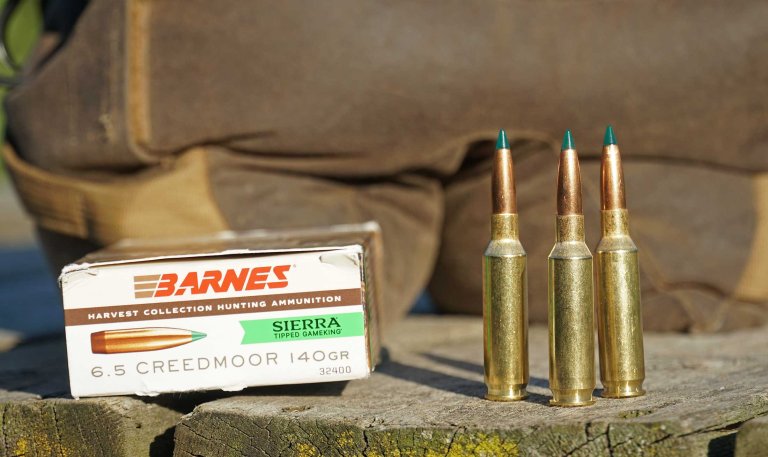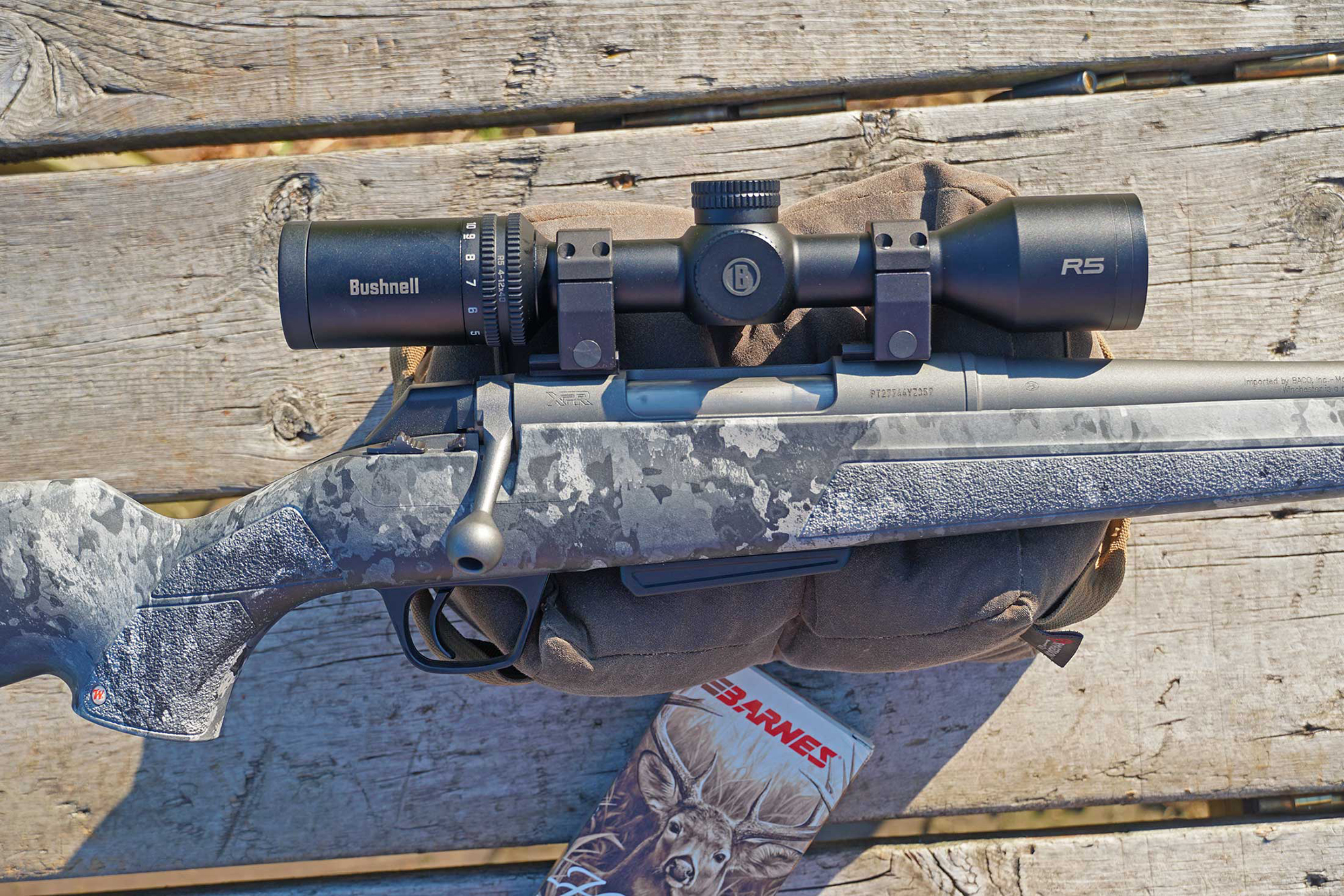Each year we review the best new rifles of the year and highlight some remarkable (and expensive) new guns. We spend a lot of ink on the most accurate and most innovative rifles because, well, they’re the most interesting.
But for the workaday deer hunter who cares more about value than refinement, a lot of these new guns, and the high-end scopes that we mount on them, just aren’t practical. Happily, there’s a whole class of rifles, optics, and hunting ammo that are affordable and perfectly functional. For most of America’s deer hunters, a sub-$1,000 rifle setup is the sweet spot.
So based on our previous in-depth reviews of bargain deer gear, I assembled a basic rig that came in under a grand. I won’t lie and say that my rifle/optic setup shoots just as good as our shooting editor’s custom “Ultimate Deer Rifle.” But for deer hunters who keep our shots under 300 yards (and this is the vast majority of us) this setup would serve honorably for a lifetime of seasons.
See It
There are a handful of solid rifles in the $500 to $800 range, which is good because you’ll need to save about $300 for a reliable hunting scope (but more on that in a minute). I think of all the rifles in this class, the Winchester XPR is an exemplary representative. It’s rugged, functional, and plenty accurate. Plus, one can be yours for about $700 or less.
My version has a TruTimber Midnight camo pattern on the synthetic stock and a cerakote finish on the barrel and receiver. The gun comes with a muzzle brake and is threaded (9/16″x24) so you can add a suppressor when you’re ready. The XPR push-feed action is built on a three-lug bolt with a 60-degree throw. I found it to be a fast, fool-proof system. Same with the polymer magazine. It pops out enthusiastically and loads easily. The trigger on my gun had no creep, but it was a bit stiff at 4 pounds, 14 ounces. That’s not bad, but not exactly precision rifle material, either.
From a deer hunter’s perspective, I like that this rifle has a flat-bottomed forend. Most of us will be shooting with the rifle resting on the rail of a treestand or the window sill of a box blind, and that flatter forend is ideal for settling into a shooting bag.

See It
This riflescope won our Great Buy award in 2024 and it’s still a great deal today. You can find variations of the R5 for about $220 to $280. I went with the 4-12X40 because it’s a good, balanced magnification range for both deer hunting and shooting on the range. But if I was only concerned about deer hunting here in the Upper Midwest (and not shooting groups to demonstrate rifle/ammo accuracy) I’d probably go with the compact LPVO version in 1-6X24. The vast majority of the whitetails I’ve killed with a rifle have been inside 75 yards. For close-range shot opportunities on moving deer, in the woods, a LPVO is ideal. And there is, of course, a classic 3-9X40 iteration of the R5 as well.
But this 4-12X40 R5 has some excellent features, too. It has a second-focal-plane illuminated reticle and MOA-based holdovers out to 800 yards. It has capped, re-zeroable turrets with 60 MOA of windage and elevation adjustment. During my range sessions I found the scope to track reliably and hold zero, which is sometimes a concern with bargain-priced optics.
The illuminated reticle is worth an extra mention. There are six brightness settings, which you adjust with the dial on the left side of the scope. Every other position turns the illumination off, so you don’t have to crank it all the way up for max brightness and then all the way down to turn it off. This is a nice, efficient feature that not all scopes in this price range offer. In our 2024 optics test, the R5 got a very good resolution score and an okay low-light score. I tested this scope off my back deck at what would have been the end of legal shooting light, and could’ve easily made shots out to 100 yards.
If, for some reason, this reliable optic stops being so reliable, it is backed by a lifetime warranty.

See It
I’m not here to debate the best deer cartridges, but I will briefly explain my choice. For deer hunting in the woods and ag fields of the Midwest, I want a cartridge that is accurate and easy to shoot. My practical and likely range is from 10 to 300 yards. There has been a ton of good coverage over the years explaining how “knock-down power” and “brush busting cartridges” are mostly myths. So that quickly rules out the big magnums. From there I want a cartridge that also offers a wide variety of ammo that’s relatively affordable, which leads me to … the 6.5 Creed. But I could have just as easily gone with the .308 or .270 Winchester. The key here is to not overthink it. When it comes to cartridge selection for deer hunting, any mild-recoiling load that you can shoot accurately will work just fine.
There’s a ton of excellent and accurate hunting ammo available in 6.5 Creed these days. I’ve had great experiences shooting Federal Fusion Tipped and Hornady Precision Hunter ELD-X over the years, but for this gun I opted for the new Barnes Harvest Collection series, which is loaded with a 140-grain Sierra Tipped GameKing bullet. This bullet should expand rapidly and reliably at all ranges I intend to shoot.
Accuracy and Handling
So how does it shoot? I followed OL’s 20-shot group protocol to record the data below.
| Ammo | Average 5-Shot Group | 20-Shot Group | Mean Radius |
| Barnes Harvest TGK 140-grain | 1.33 | 2.21 | 0.57 |
This is on par with the type of accuracy Tyler Freel gathered for his review of best budget rifles. Here’s a good way to think about this data: with a perfect zero and good shooting, any one of my shots will hit an average of .57 inches away from my aim point at 100 yards.
In terms of how this translates to real-world accuracy in the field, it’s safe to say this rifle will be more than accurate enough for an average deer hunter’s demands. In other words, the limiting factor in accuracy will not be the rifle or optic, but my own field shooting skills.
Freel range tested a different XPR variation with the other two loads I mentioned above and got similar accuracy results to my shooting with the 140-grain TGKs.
| Ammo | Avg. 5-Shot Group Size | 20-Shot Group Size | 20-Shot Mean Radius |
| Hornady Precision Hunter 143-grain ELD-X | 1.11 inches | 2.09 inches | .52 inches |
| Federal Fusion Tipped 140-grain | 1.03 inches | 2.07 inches | .55 inches |
Final Thoughts on Affordable Deer Rifle Setups
What I like about this setup, beyond accuracy from the bench, is how simple and intuitive it is. The optic and rifle weigh 8.36 pounds which is a great, middle-of-the-road weight that makes for easy carrying through the woods and nice shooting from the stand. The rifle is well balanced, points naturally, and is easy to shoot off hand, which is not the case for many heavy, long-range rifle setups.
I’m not concerned (or even interested) in what this rig will do at 800 yards. I will never shoot it at that distance. If you want your deer setup to be affordable, you must also be practical. That means acknowledging the realistic shooting scenarios you’ll encounter each fall. For me, that means shooting out of a blind or from a treestand at deer in the woods or in fields. Shots will be relatively close, but that doesn’t necessarily mean they’ll be easy. Many of my shots will be taken at moving deer, and at deer in tight cover. I’ll have to shoot from improvised rests or offhand. I’ll also have to make precise shots to ensure short recoveries (not only because that’s my ethical responsibility as a hunter but also because I don’t want wounded deer running onto the neighbor’s property).
I’d argue that for these purposes, an affordable, handy, and reasonably accurate rifle with a medium-powered scope is more capable than a super heavy, long-range rifle that’s over-magnified. And the price is right, too.
Read the full article here





